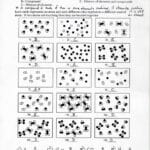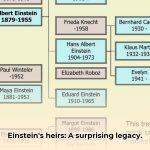This comprehensive guide provides everything you need to know about classifying matter worksheets, from basic concepts to advanced applications. Whether you’re a teacher, homeschooling parent, or student, you’ll find valuable resources and practical tips to enhance your understanding of matter.
Unlocking the Secrets of Matter: A Comprehensive Overview
Ever wondered what everything around you is made of? It’s matter! And classifying matter is like sorting the pieces of a giant puzzle. This guide, along with free printable classifying matter worksheets, will help you understand how scientists organize all the “stuff” in the universe. Think of it as your personal decoder ring to the world of atoms, molecules, and everything in between.
What is Matter?
Matter is anything that occupies space and has mass—you, me, your device, the air, everything! This guide breaks down matter into two main categories:
- Pure Substances: These can’t be broken down further without changing their identity.
- Elements: The basic building blocks, like hydrogen and oxygen.
- Compounds: Formed when elements chemically combine, like water (H₂O).
- Mixtures: Combinations of different substances not chemically bonded.
- Homogeneous: Uniform composition throughout, like saltwater.
- Heterogeneous: You can see the different parts, like a salad.
- Further Classification: Mixtures can be further classified into solutions, suspensions, and colloids based on particle size and properties. This adds another layer of complexity to how we understand mixtures and their behavior. For example, milk is a colloid, a special type of mixture where tiny particles are dispersed but not dissolved.
States of Matter: Solid, Liquid, Gas (and More!)
You likely know the three common states of matter: solid, liquid, and gas. This guide will explore their unique properties:
- Solids: Hold their shape and have a fixed volume.
- Liquids: Take the shape of their container but have a fixed volume.
- Gases: Expand to fill their container, having neither a fixed shape nor volume.
Temperature and pressure influence these states. We’ll also explore less common states like plasma (found in stars) and Bose-Einstein condensates, which exist at extremely low temperatures.
Zooming In: Particle Models
Imagine shrinking to the size of an atom. Particle models help us visualize how atoms and molecules arrange and behave in different states of matter and mixtures. They show why solids are rigid, liquids flow, and gases expand. Understanding particle behavior is key to grasping how matter changes states. For example, when a solid melts into a liquid, its particles gain energy and move more freely, but they don’t become completely detached from each other.
Classifying Matter Worksheets: Your Free Guide to Deeper Learning
Classifying matter worksheets provide a structured approach to learning the different types of matter. These are not just about memorizing; they encourage you to apply knowledge to real-world examples.
Worksheet Variety:
- Matching: Pair terms to definitions.
- Scenario Analysis: Apply knowledge to real-world situations.
- Diagram Interpretation: Label components of matter and mixtures.
- Multiple Choice/True or False: Test comprehension.
These diverse formats ensure engagement and cater to different learning styles.
Finding and Utilizing Free Printable Classifying Matter Worksheets
The internet offers a wealth of free printable resources. Start your search with websites like WorksheetZone, Math Worksheets 4 Kids, and Education.com. Consider these strategies for effective use:
- Variety is Key: Incorporate different types of worksheets for a comprehensive learning experience.
- Hands-On Learning: Supplement worksheets with experiments. For instance, mix salt and water to illustrate a solution or melt ice to observe a phase change.
- Assessment and Feedback: Use worksheets as tools for both formative and summative assessment. Provide regular feedback to reinforce learning.
- Encourage Explanation: Ask students “why” to encourage critical thinking. For example, why did they classify a substance as a compound instead of an element? This helps cement understanding.
- Real-world Connections: Relate concepts to everyday scenarios like cooking (phase changes) or the properties of materials used in construction.
Worksheet Examples:
| Type of Worksheet | Description | Benefits |
|---|---|---|
| Sorting Activities | Students categorize materials based on observable properties. | Develops critical thinking and reinforces understanding of matter’s states. |
| Cut-and-Paste Activities | Students cut out images representing materials and paste them into corresponding categories. | Kinesthetic learning enhances memory and comprehension. |
| Fill-in-the-Blanks | Complete sentences related to matter classification, reinforcing vocabulary. | Reinforces vocabulary and key concepts. |
| Crossword Puzzles | Matter-related vocabulary crossword puzzles offer a fun review. | Enhances retention and provides an engaging review. |
If you’re seeking further practice with chemical concepts, our worksheet answers on balancing chemical equations might be helpful.
Why Use Classifying Matter Worksheets?
These worksheets are indispensable for both educators and students:
- Knowledge Reinforcement: Enhance understanding of core concepts.
- Interactive Engagement: Promote active learning through diverse activities.
- Assessment: Gauge student comprehension and identify areas for improvement.
- Flexibility: Supplement lessons, provide homework assignments, and accommodate various learning styles.
- Accessibility: Free and printable resources support classroom and homeschooling environments.
Types of Classifying Matter Worksheets: A Detailed Breakdown
We’ve touched upon different worksheet types, but let’s delve deeper. Each format offers unique advantages:
-
Sorting Activities: These develop critical thinking skills by challenging students to categorize materials based on observable properties. Learners must analyze whether materials have definite shapes and volumes, prompting discussion about more ambiguous substances like gels or foams.
-
Cut-and-Paste Exercises: This kinesthetic approach is particularly beneficial for younger learners. Physically manipulating images reinforces the properties of solids, liquids, and gases.
-
Fill-in-the-Blanks: This classic format strengthens vocabulary and reinforces key concepts directly. It provides a structured method for testing knowledge and understanding of definitions.
-
Crossword Puzzles: This engaging approach adds an element of fun to the learning process. Crosswords aid in vocabulary retention by requiring students to recall terms based on clues, making it a less traditional and more playful learning method.
-
Matching Exercises: This format helps students quickly review key concepts and identify areas requiring further attention. It’s a simple yet effective way to assess basic understanding and pinpoint any gaps in knowledge.
-
Diagram Labeling: This visually-oriented format reinforces spatial reasoning skills. Students learn to identify and label different components of matter diagrams, further solidifying their understanding of particle behavior and states of matter.
-
Scenario-Based Questions: These higher-order thinking activities provide real-world context, asking students to apply learned concepts to complex situations. This fosters critical thinking by challenging students to analyze and solve problems related to matter classification.
| Type of Worksheet | Pros | Cons |
|---|---|---|
| Sorting Activities | Hands-on, encourages critical thinking | Preparation can be time-consuming. |
| Cut-and-Paste Exercises | Engaging, good for visual/kinesthetic learners | Requires materials (scissors, glue) and can be messy. |
| Fill-in-the-Blanks | Reinforces vocabulary, easy to assess | Can be repetitive and memorization-based. |
| Crossword Puzzles | Fun, reinforces vocabulary | Can be challenging, may require additional support. |
| Matching Exercises | Quick review, easy to implement | May not promote deep understanding. |
| Diagram Labeling | Helpful for visual learners | Can be less creative. |
| Scenario-Based Questions | Encourages critical thinking, real-world application | Requires more complex thinking. |
Real-World Applications & Ongoing Research
Classifying matter isn’t just a theoretical exercise; it’s integral to fields like medicine, cooking, and environmental science. For example, understanding the properties of matter is crucial for developing new drugs, creating recipes, and analyzing environmental pollutants.
The exploration of matter continues. While we typically discuss solids, liquids, gases, and plasma, research suggests other states might exist. This ongoing research highlights the dynamic nature of scientific understanding and invites further exploration of the fascinating world of matter.
This guide, combined with the use of classifying matter worksheets, empowers you with a comprehensive toolkit for understanding the building blocks of our universe. So grab your pencils, print out some worksheets, and embark on a journey of scientific discovery!
















